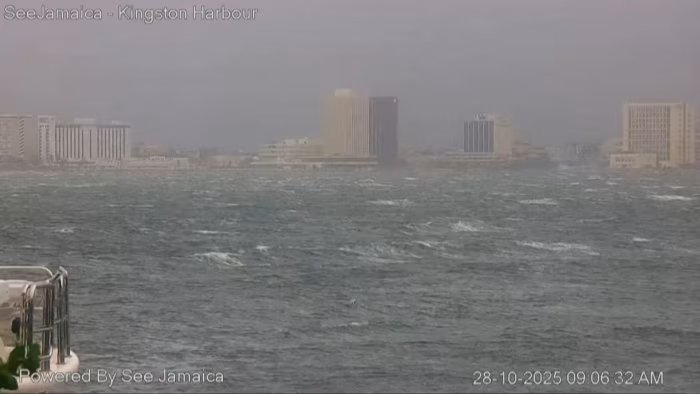Unlock the Editor’s Digest for free
Roula Khalaf, Editor of the FT, selects her favourite stories in this weekly newsletter.
Developing countries receive less than one-tenth of the finance they will need to adapt to cope with climate change, the UN has said, leaving a “yawning gap” for spending on projects such as flood defences or crop irrigation.
Adaptation costs in developing countries would range from $310bn to $365bn a year by midway through next decade, the UN’s environment programme estimated in its latest annual adaptation report.
By contrast, the international public adaptation finance flows for developing countries fell to $26bn last year compared to $28bn the year before. This is also well short of a pact countries made at the Glasgow UN climate summit in 2021 to raise about $40bn a year by 2025.
This “yawning gap” was “putting lives, livelihoods and entire economies at risk”, the UN said.
Adaptation typically receives less funding attention as it involves government spending and lacks the ability to generate returns for traditional investors or lenders.
A fresh push at the UN COP30 climate summit in Brazil next month is being made by a group of development banks to tie finance more closely to its contribution to adaptation projects, including by offering concessional loans or incentives for making countries more resilient.
The latest modelling for the adaptation report was based on a “middle of the road” long-term average temperature rise of 2.3C above preindustrial levels by 2100, said Henry Neufeldt, one of the lead authors. The UN has separately projected a temperature rise of 2.6C if countries climate policies are followed through.
Countries had aimed under the 2015 Paris accord to limit warming to ideally 1.5C. The World Meteorological Organization estimates that already the long-term global temperature rise by last year was about 1.3C above the 1850-1900 measurement baseline.
UN secretary-general António Guterres told the WMO last week that exceeding the 1.5C level in the short term was “now inevitable”.
“Climate impacts are accelerating. Yet adaptation finance is not keeping pace, leaving the world’s most vulnerable exposed to rising seas, deadly storms, and searing heat,” Guterres said.
Adaptation spending should be seen as a “lifeline”, rather than a “cost”, Guterres said. Every dollar spent now on building coastal protections, reducing temperatures in cities or expanding the capacity of health systems saves many more dollars in remedial action, research shows.
The report referenced projects in Fiji to plant mangroves, which can act as a natural wave barrier, and floating solar panels in Colorado river basins, which generate clean energy while slowing the evaporation of water.
Much of the discussion at COP30 about how to scale up climate finance to an aspirational $1.3tn annually is focused on cutting the record levels of emissions behind global warming, rather than adapting to climate change.
Ahead of the gathering on the edge of the Amazon, Simon Stiell, executive secretary of the UN’s climate arm, said he expected a roughly 10 per cent fall in emissions between 2019 and 2035, compared with the need to cut them by almost half by 2030 to keep within the 1.5C goal.
This estimate was based on available data from 98 countries’ plans, known as “nationally determined contributions”, covering almost 80 per cent of global emissions.
The forecast lacks updated plans from big polluters such as India and South Korea, but includes an ambitious US plan lodged before the withdrawal from the Paris accord on climate by President Donald Trump this year, as well as provisional EU and Chinese plans or statements of intent.
Rachel Cleetus, senior policy director at the Union of Concerned Scientists, said that “despite significant progress in ramping up renewable energy, nations’ current emission reduction commitments are collectively well short of what the science shows is needed”. The lack of progress was “enraging, shameful and heartbreaking”, she said.
Climate Capital

Where climate change meets business, markets and politics. Explore the FT’s coverage here.
Are you curious about the FT’s environmental sustainability commitments? Find out more about our science-based targets here

